Buckskin Horses: Why Are They Called Buckskins?
Buckskin horses get their name from the color of their coat. The origins of buckskins trace all the way back to Spain in the 1500s. Way back then, Spanish equestrians had set out to breed a horse that was that golden caramel color, affectionately known now as buckskin horses.
Buckskin Horse Colors
The variation in buckskin coloring has a wide range. The bottom portion of the legs, mane, and tail of a buckskin horse will always be solid black. The buckskin color is genetic, and in order for horse owners to determine if their horse is truly a buckskin, an equine coat color test is normally required. Some of the common buckskin horse colors include:
Buttermilk Buckskin Horses
Buttermilk buckskins are typically what immediately comes to mind when most people think of a buckskin. Buttermilk is the lightest in the range of buckskin colors. For reference, the famous stallion horse, Spirit, is a buttermilk buckskin!
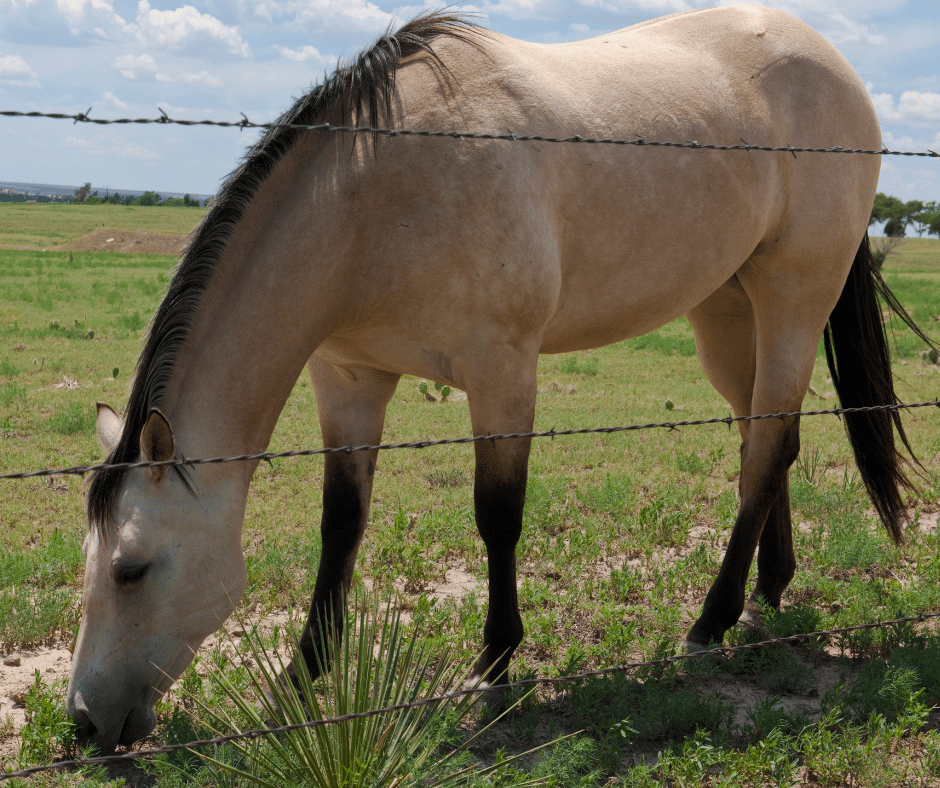
Standard Buckskin Horses
Standard buckskins have a coat color that most similarly resembles the coat color of a deer.
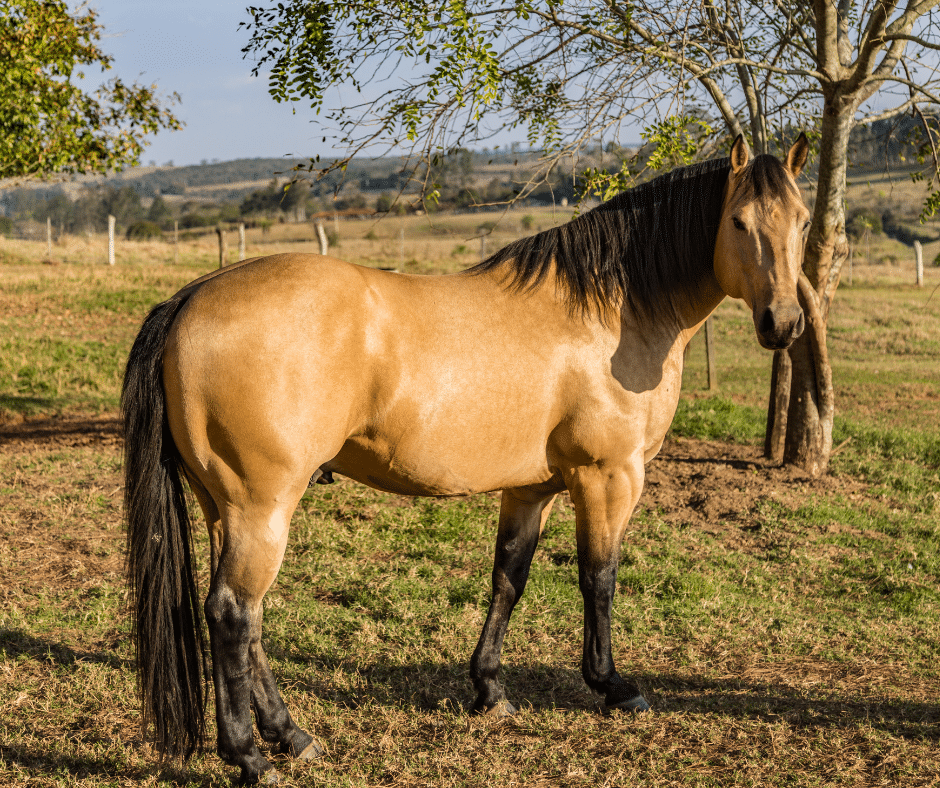
Sooty Buckskin Horses
Sooty buckskin horses are also referred to as “burnt buckskins”. These horses have a much darker coat than the traditional buckskin coat color. The color pattern on sooty buckskins is typically lighter underneath, and darker on top. These horses still have the buckskin color gene but with darker browns throughout.
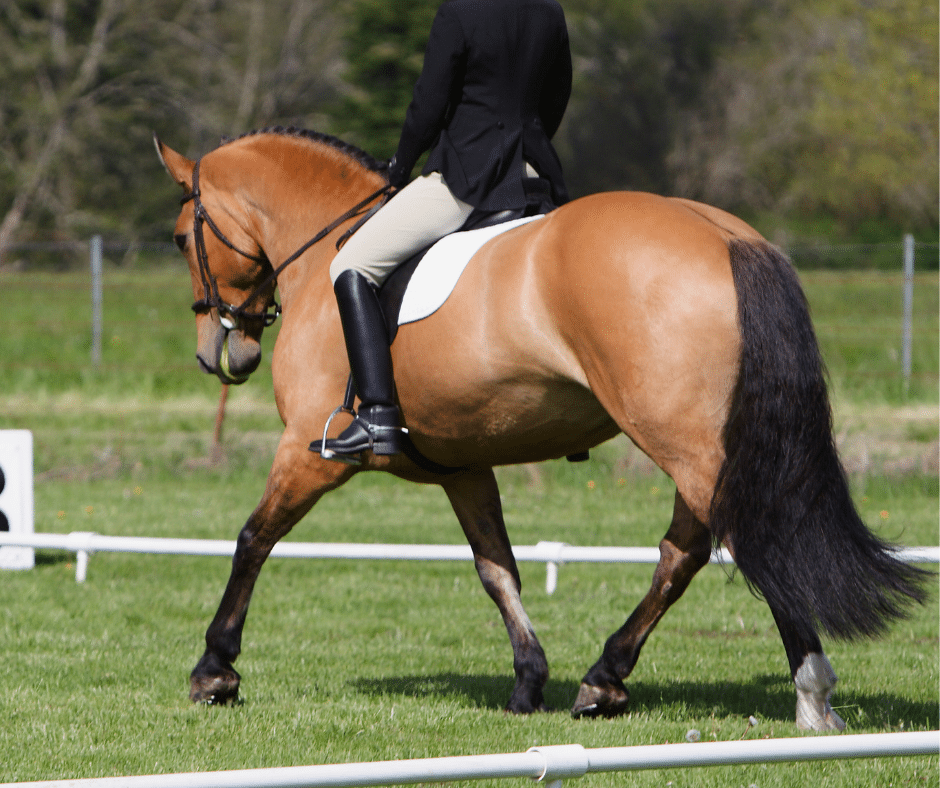
Silver Buckskin Horses
Silver buckskins will have light gray hairs within their coat. The amount of gray can vary greatly. Some silver buckskins have trace amounts of gray hair, while others have so much gray that they may be mistaken for gray horses.
Dapple Buckskin Horse
Any horse can have dapples on their coat color. Dappling is also a genetic trait, so in order for a horse to be a dapple buckskin, it has to carry the gene for dappling and the buckskin coat color. These horses can be any shade in the range of buckskin color variations, as long as they are a true buckskin and their coat dapples.
Learn More: 13 Dapple Grey Horse Facts That Will Blow Your Mind
What Breed are Buckskin Horses?
Buckskin horses are not a breed. Since the name buckskin refers to their coat color pattern, this coloring is now found in almost all horse breeds. There are a few breeds that cannot have buckskins that include purebred breeds such as Fresiains, Belgian, Shire, Arabian, and Suffolk Punch horses.
The most common breeds that recognize the buckskin color are:
-
Mustang
-
Andalusian
-
Peruvian Paso
-
Tennessee Walking Horse
-
Quarter Horse
-
Morgan
Characteristics of Buckskin Horses
Although buckskins are not considered rare anymore, these horses certainly have earned a reputation that sets them apart. A few fun facts about the nature of buckskin horses that you may not have known:
-
According to studies, buckskin horses tend to have more stamina and are stronger than other horses.
-
Buckskin horses are commonly known throughout the horse community as hard workers.
-
On average, buckskins tend to be on the petite side. No matter their breed, the average buckskin horse is between 14.3 and 15 hands.
-
Have you ever heard the term hooves of steel? Well, that’s buckskins for you. These horses have very strong hooves.
Transporting Buckskin Horses
Because of their petite stature, you won’t be able to load a buckskin horse into any ol’ horse trailer. "Most" smaller horse breeds that are around 15 hands and under can ride in a standard size stall without issue. A majority of trailers manufactured in the U.S., whether straight load or slant load, will have approximately 31" of distance between the padding.
In those instances, the chances of a horse falling down for lack of ability to brace themselves or turning around inside the stall are slim. The problem occurs with a small horse size, such as 14 hands, being hauled in a stall designed for a thoroughbred 16.2 or greater.
If the stall is wider a panicky horse with extra space will not be able to brace themselves nearly as well in the wider stall and the risk of your horse attempting to turn around in the stall or even fall down are increased significantly.
This is why custom horse trailers can be so beneficial. Example, if you are hauling one 14 hand, one 16.2, and one 17+ Warmblood, a custom horse trailer design can modify all three stalls to be the correct size. Think of it when traveling by plane. Some folks fit fine in standard leg room and standard width seats. Others need a 'comfort' upgrade with a little more space. Yet some folks will require first class
This is why it’s important to choose a custom horse trailer that can be designed to fit specific horse sizes, such as small buckskin horses.
You can use this handy Trailer Finder tool to determine which horse trailer model is right for the needs of you and your horses.
Are Buckskin Horses Good for Racing?
Although buckskin horses are very strong and willing to work for you, they definitely shouldn’t be your first pick when it comes to racing. On average, a buckskin horse can run up to 30 MPH. In contrast, the average speed of a racehorse is between 40-44 MPH. So, buckskin horses are certainly not slow by any means, but they aren’t built for the racetrack either.
Read More: The Top 7 Greatest Racehorses in History
Dun Horses vs. Buckskin Horses
Upon first glance, duns and buckskins can be mistaken for one another. Although similar in appearance, dun horses and buckskin horses are different. Duns and buckskins certainly have some overlap in characteristics and traits, but there are distinguishable differences between the two as well.
Here is a quick reference comparison chart between dun horses and buckskin horses:
|
Trait |
Dun Horse |
Buckskin Horse |
|
Markings |
Primitive markings: stripes on legs, shoulders, dorsal stripe |
Can have white markings (typically around the face) |
|
Genetics |
Dun dilution gene |
Cream dilution gene |
|
Color Pattern |
Can range in shades, typically golden to brownish gold |
Can range in shades, anywhere from cream to black |
|
Base Color |
All base colors |
Bay base only |
Palomino Horses vs. Buckskin Horses
The coloring of a palomino horse can resemble buttermilk or golden buckskins. Different shade variations in both color families can make these horses seem very similar. Palominos differ from buckskins because they are much lighter in color, and their mane and tail are white. Whereas with buckskins, they’re typically darker in color than standard palominos, and their mane and tail are black.
Buckskin Horses in History
As mentioned earlier, Spirit, the animated horse from the movie Spirit and the TV show Spirit, Riding Free, is a very well-known buckskin horse. Spirit is not the only buckskin horse that you may have seen on the big screen. Some other times that buckskin horses have played major roles include:
Cisco: an American Quarter Horse who starred in the 1990 film Dances with Wolves
Buttermilk: Dale Evans, cowgirl star, rode a buckskin Quarter Horse named Buttermilk. Buttermilk was featured in many 1950s western movies
Buck: in the TV series the Range Rider, Jack Mahoney rode a buckskin horse affectionately known as Buck
Apache: Bill Williams rode a buckskin horse named Apache in the TV series Adventures of Kit Carson
 How Long Do Buckskin Horses Live?
How Long Do Buckskin Horses Live?
The average lifespan of a buckskin horse is between 25 to 30 years. Of course, the specific lifespan expectancy will depend on what breed of horse that the buckskin belongs to. Find a list below of the average lifespan of horses broken down by breed:
Andalusian Horse Average Lifespan: 20-25 years
Appaloosa Horse Average Lifespan: 25-35 years
American Paint Horses Average Lifespan: 25-30 years
American Saddlebred Horses Average Lifespan: 30-35 years
Clydesdale Horses Average Lifespan: 25-30 years
Haflinger Horses Average Lifespan: 25-30 years
Icelandic Horses Average Lifespan: 25-30 years
Mustang Horses Average Lifespan: 20-25 years
Tennessee Walker Horses Average Lifespan: 28-33 years
Thoroughbred Horses Average Lifespan: 25-28 years
Quarter Horses Average Lifespan: 25-33 years
On average, the horse breed that has the shortest lifespan is Friesian horses. This is mainly because Fresians are more prone to genetic disorders in comparison to other breeds of horses.
How Much Do Buckskin Horses Cost?
Because of their unique coloring, buckskin horses are very sought after. Plus, these horses are known for their superior characteristics of being strong and hard-working. So, it’s understandable why the prices of buckskin horses have continued to rise, regardless of breed. On average, horse lovers looking to purchase a buckskin horse can expect to spend anywhere between $2,000-$10,000.
Owning a Buckskin Horse
If you’re considering caring for a buckskin horse, know that because of their genetics, these horses can be a little high maintenance. Buckskin horses are stout, and designed for work. They are high-energy horses, so it’s important that they have adequate turn-out time and are exercised. In addition, as with any type of horse, you’ll want to make sure that they are receiving proper nutrition and hydration. Keeping them on a regular routine with your veterinarian will ensure that they remain happy and healthy.
Frequently Asked Questions
Are buckskin horses good horses?
Yes! Any buckskin horse owner will attest that buckskin horses are loyal, strong, and beautiful.
Are buckskin horses good for beginners?
Buckskin horses make a great horse option for those who are just getting into horse riding. These horses are typically on the smaller side and less than 15 hands. Because they are lower to the ground than the average horse, it makes riding them a little less intimidating.
Where can I buy a buckskin horse?
As with any type of horse, it is important to make sure you are purchasing from a reputable source. A well-established breeder or horse rescue is a good option.
What horse is the best for ranch/farm work?
Buckskin horses have high levels of stamina and are strong, making them an excellent choice for ranch work.

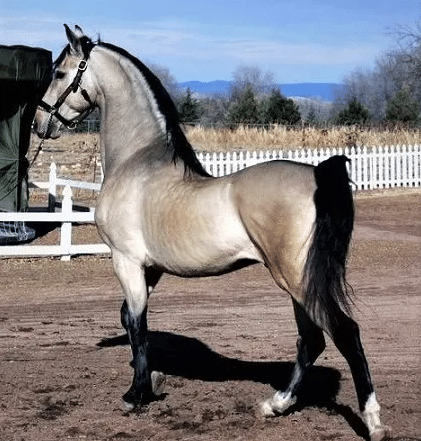
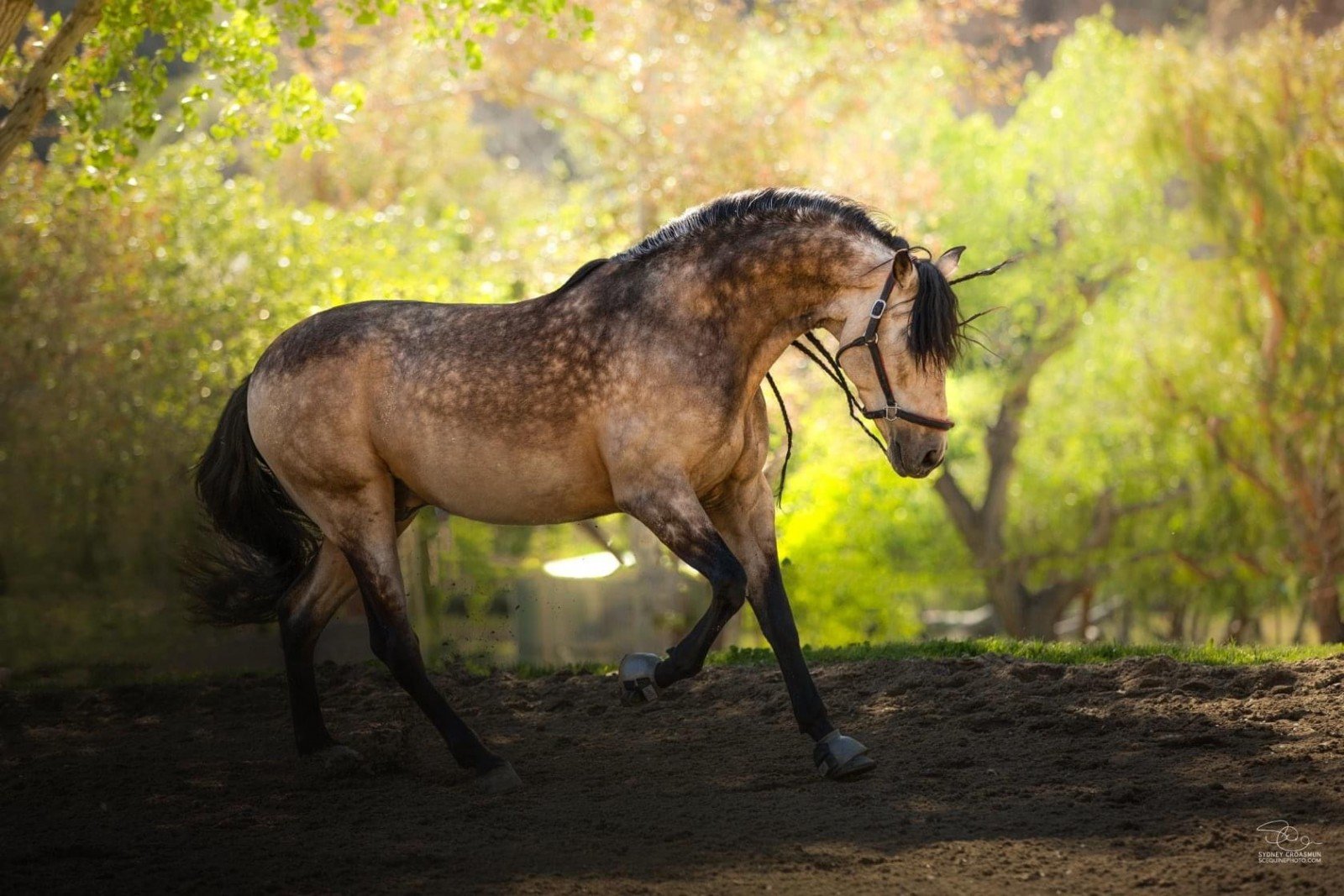
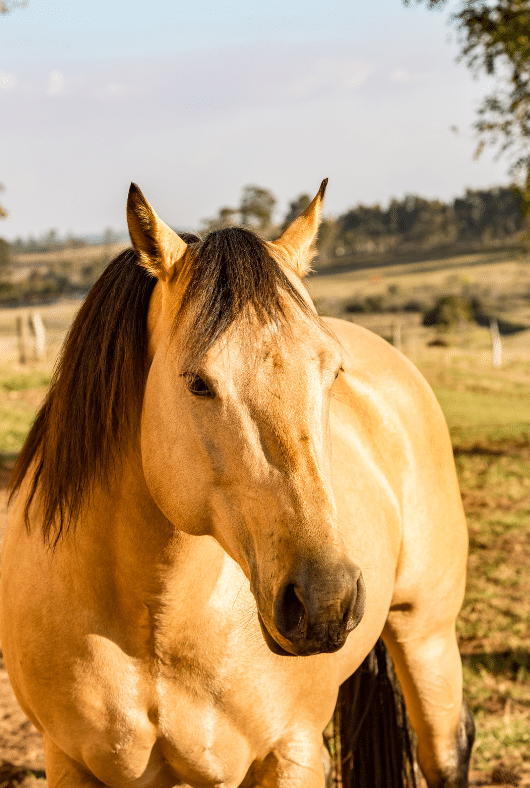 How Long Do Buckskin Horses Live?
How Long Do Buckskin Horses Live?